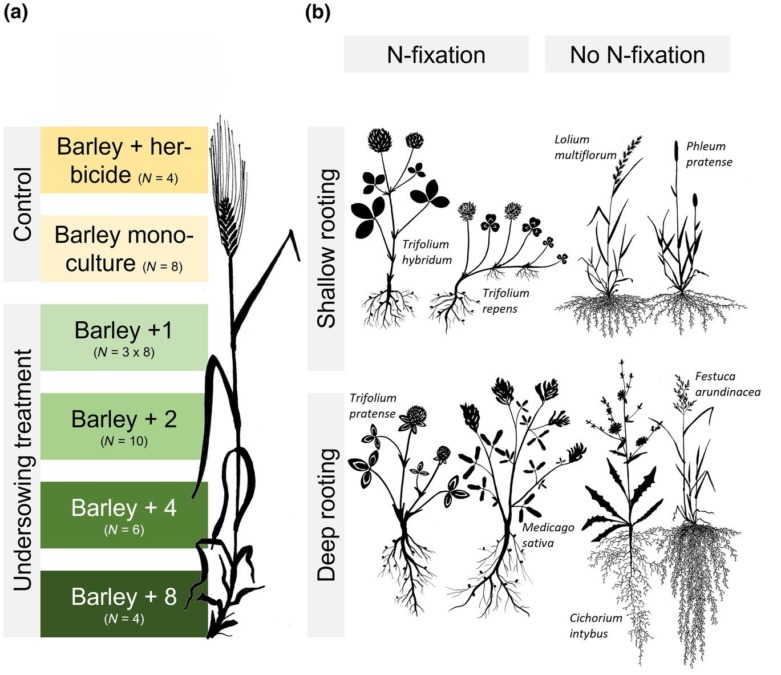Even one well-chosen undersown plant species reduces foliar disease in barley
Article: Potential of undersown species identity versus diversity to manage disease in crops
Authors: Cappelli Seraina, Domeignoz Horta Luiz, Gerin Stephanie, Heinonsalo Jussi, Lohila Annalea, Raveala Krista, Schmid Bernhard, Tiusanen Mikko Johannes, Thitz Paula, Laine Anna-Liisa
Journal: Functional Ecology
Year: 2024
Five species out of eight reduced foliar disease in barley
The study investigated the effect of undersown plants on the leaf disease symptoms in barley. Five of the eight plant species tested in the study were found to reduce the disease when sown under barley, even one species at a time. Thus, the diversity needed to reduce disease pressure doesn’t have to mean a seed mixture of several species, but even one well-chosen undersown plant can be useful without significant effects on yield. In general, reducing disease pressure by using undersown plants helps to reduce the use of fungicides and pesticides.
Eight plant species, of which four nitrogen-fixing and four deep rooted, were studied in the experiment, so that these traits occurred together and separately (Figure 1b). One or more studied species were sown with barley, and barley was also sown alone with and without herbicide (Figure 1a). Each different experimental design was present in at least three plots (see Figure 1a) and in total there were 56 plots in the experiment.
Barley was sown in May–June and nitrogen was applied at a rate of 80 kg nitrogen per hectare. The undersown plants were sown one week later. The presence of leaf disease was assessed by determining the degree of leaf damage, i.e. the number of spots visible on the leaves. The experimental plots located in Viikki, Helsinki, and the experiments for this research article were carried out in 2020.

(Cappelli et al. 2024, figure 2, modified from the original)
Effective undersown plant significantly reduced leaf damage
The main difference in disease prevalence between plots was whether or not undersown plants were used at all. Undersowing reduced the probability of extensive leaf damage from 70% to 19%.
All four nitrogen-fertilising crops were found to reduce disease in barley: red clover, white clover, alsike clover, alfalfa, and moreover chicory. These plants are already commonly used. However, alfalfa outgrew the cash crops and reduced the yield by about half. Otherwise, the undersown plants had little effect on yield. Two plant species, timothy and Italian ryegrass, were found to increase the incidence of barley leaf disease.
The beneficial effect of the undersown plants was found to be based on the mechanisms of the above-ground ecosystem, i.e. the soil had no influence. The effect of below-ground versus above-ground mechanism was studied by taking soil from different plots, growing barley in a greenhouse, and planting the barley grown in this way back to the field on different plots from where the soil was taken.
The abundance of the undersown plant is important
The plots with two and four undersown species were planted with different amounts of nitrogen-fixing and/or non-nitrogen-fixing and deep/shallow-rooted species. This was done to investigate whether the possible effects on barley disease were due to the number of plant species per se or to the number of different species types. The effect of reducing leaf disease was found to be due more to the abundance than to the variability.
As with farming in general, there are different challenges in farming for research. In this study, leaf disease gradually infected barley in all plots and by August all the leaves examined were damaged by the disease. Therefore, the results presented in the research article are based on the leaf damage results assessed in July, and therefore the results mainly concern the early part of the growing season. Underground disease symptoms were not assessed in the study.
The research was part of the TWINWIN project of the Carbon Action network.